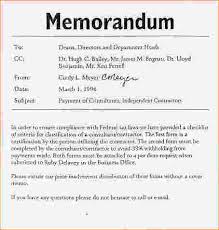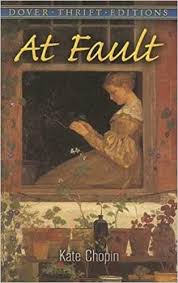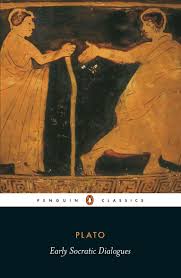
Prevention of Type 2 Diabetes in Adolescent Navajo Indians
Order Instructions:
Please take note that I will send two document for this assignment , which will include the letter to the stakeholder, and a promotional pamphlet which the writer is to use for this paper. also he has to search online for additional information on this particular case study as require by the assignment . He should pay attention to all details and respond to all questions in the case study clearly as the prof will asses to see that all questions where responded to. They are 5 key questions in the case study, so the writer must provide 5 key sections clearly responding to this 5 questions
Case Study: Prevention of Type 2 Diabetes in Adolescent Navajo Indians
Directions
For this assignment please follow these instructions in sequence.
– Complete all assigned reading noted in the resource section at the end of the questions before attempting this assignment.
– Review the two promotional documents provided for the launch of the community health promotion ( letter to stakeholders and Promotional Pamphlet).
– Locate data and documents necessary to answer the case study questions from the internet.
Case Study Questions:
a. As a key stakeholder, were you swayed to support this community health Initiative? Please support your yes or no answer with rationale
b. Was the data presented sufficient to support this community health proposal?
c. Identify at least four strengths of this proposal?
d. Identify at least four weaknesses of this proposal?
e. For the weaknesses identified propose valid solutions with supporting rationales
These answers should be contained in a paper no longer than 3 pages, excluding title page and references. The document should be in appropriate 6th edition APA format.
Resources to aid in the paper.
Health Promotion in Nursing Practice
• Chapters 4, 5, 6, 7 and 9
Benjamins, M. R., & Whitman, S. (2010). A Culturally Appropriate School Wellness Initiative: Results of a 2-Year Pilot Intervention in 2 Jewish Schools. Journal Of School Health, 80(8), 378-386.
Work group for community health and development at the University of Kansas. (2012). Chapter 8 developing a strategic plan sections 1-7. Retrieved from http://ctb.ku.edu/en/tablecontents/chapter_1007.aspx
Work group for community health and development at the University of Kansas. (2012). Developing an action plan main section. Retrieved from http://ctb.ku.edu/en/tablecontents/sub_section_main_1089.aspx
It is important that writer read and reference to the above readings for this paper.
SAMPLE ANSWER
Prevention of Type 2 Diabetes in Adolescent Navajo Indians
Was the stakeholder swayed?
There are high chances that the key stakeholder will be swayed based on the fact that this is meant to create awareness. On the contrary, the matter is very critical and requires immediate and solid support and attention. It was important to point out that diabetes was infrequent among the Navajo youths who were less than ten years. On the contrary, the incidence and prevalence of the disease was extremely high among the older youths. This would have been very vital in ensuring that the main stakeholder supported the program at Gallup, New Mexico and beyond. Moreover, if aware of the seriousness of the disease though the incidence, prevalence, and impacts among the adolescent Navajo youths, he would also support the proposed prevention and management strategies.
Sufficiency of the data
The data provided was not adequate to support the proposal. It was important to present the facts regarding the prevalence, incidence, factors contributing to the disease, and the effects the disease has on the adolescent Navajo Indians. This would have emphasized the gravity of the issue and, thereby, ensuring more support of the proposal. Emphasizing how critical a matter is among a certain target group as well as how the disease impacts on the affected can go a long way in ensuring that the program is supported as needed.
Strengths
The proposal is prepared by professional nurses from Gallup Indian Medical Center. In this case, the school community has higher chances of accepting the proposal based on credible professionalism. Moreover, the proposal was written by the lead designer of the proposal. Second, the proposal is relevant to the challenges facing the Navajo Indians (Work group for community health and development at the University of Kansas, 2012). The community health proposal addresses prevention of diabetes types 2 among the adolescent Navajo Indians. This is based on the fact that the prevalence of the disease is high among the adolescents and, therefore, many other stakeholders are likely to support the community health proposal since it addresses an actual community challenge (Tran et al., 2014).
Third, the target group chosen for the community health proposal is fit. It was strategic for the proposal proponents to choose a middle school system (5TH, 6TH, 7TH, or 8TH grade students) in Gallup New Mexico since these basically constitute of the affected adolescents. It was easier to locate the target group from a school. Fourth, the proposal will first be presented to the school board meeting. This is very crucial in ensuring that the school management supported the proposal and encouraged the students to enroll for the program.
Weaknesses
The proposal is lacking in that the seriousness of the cause has not been emphasized. There was a great need to indicate the actual figures (prevalence and incidence) of the disease (Dabelea et al., 2014). This would have ensured that the proposal was supported by the key as well as other stakeholders. In the proposal, it is stated that a community health proposal was developed and aimed at students who were then in middle school system in relation to type 2 diabetes prevention. However, there is no mention of why this was important for this target group. What effects does the disease affect this age group?
The diabetes type 2 community health proposal also lacks in that there is no mention of why prevention is being advocated for. There are other approaches that could have been taken including management, treatment, awareness creation, or control of the disease. However, since the proponents have settled on prevention, it is important to mention why this is the approach they consider more proper (Imperatore et al., 2012). Not only does the proposal fail to point out the significance of the matter to the key stakeholders, the promotional pamphlet is also not convincing. Seeing such a promotional pamphlet, many adolescents who are not aware of the diabetes type 2 concern among the adolescent Navajo Indians will ignore it (Work group for community health and development at the University of Kansas, 2012).
Valid solutions for the weaknesses
The prevalence and incidence of diabetes type 2 among the adolescent Navajo Indians should be highlighted and compared to statistics of other adolescents elsewhere. This would emphasize on the gravity of the matter. It is also important to mention why this target group is important as far as the disease and adolescent Navajo Indians are concerned. The proposal should have elaborated in detail why this age group was particularly of concern
The proponent of the proposal should mention and explain the benefits or advantage of preventing diabetes type 2. This is based on the fact that they could have adopted other approaches. But since they settled on prevention, there is a need to mention how prevention of the disease is useful (Benjamins & Whitman, 2010). The promotional pamphlet should have at least indicated how serious the matter is among these adolescents through a mention of the incidence and prevalence. Moreover, there should be a mention of why prevention is important. This measure would go a long way in ensuring that many adolescents enrolled for the program.
References
Benjamins, M. R., & Whitman, S. (2010). A Culturally Appropriate School Wellness Initiative: Results of a 2-Year Pilot Intervention in 2 Jewish Schools. Journal Of School Health, 80(8), 378-386.
Work group for community health and development at the University of Kansas. (2012). Chapter 8 developing a strategic plan sections 1-7. Retrieved from http://ctb.ku.edu/en/tablecontents/chapter_1007.aspx
Work group for community health and development at the University of Kansas. (2012). Developing an action plan main section. Retrieved from http://ctb.ku.edu/en/tablecontents/sub_section_main_1089.aspx
Tran, F., Stone, M., Huang, C. Y., Lloyd, M., Woodhead, H. J., Elliott, K. D. & Craig, M. E. (2014). Population‐based incidence of diabetes in Australian youth aged 10–18 yr: increase in type 1 diabetes but not type 2 diabetes. Pediatric diabetes.
Dabelea, D., Mayer-Davis, E. J., Saydah, S., Imperatore, G., Linder, B., Divers, J. & Hamman, R. F. (2014). Prevalence of type 1 and type 2 diabetes among children and adolescents from 2001 to 2009. JAMA, 311(17), 1778-86.
Imperatore, G., Boyle, J. P., Thompson, T. J., Case, D., Dabelea, D., Hamman, R. F. & Standiford, D. (2012). Projections of Type 1 and Type 2 Diabetes Burden in the US Population Aged< 20 Years Through 2050 Dynamic modeling of incidence, mortality, and population growth. Diabetes Care, 35(12), 2515-2520.
We can write this or a similar paper for you! Simply fill the order form!












